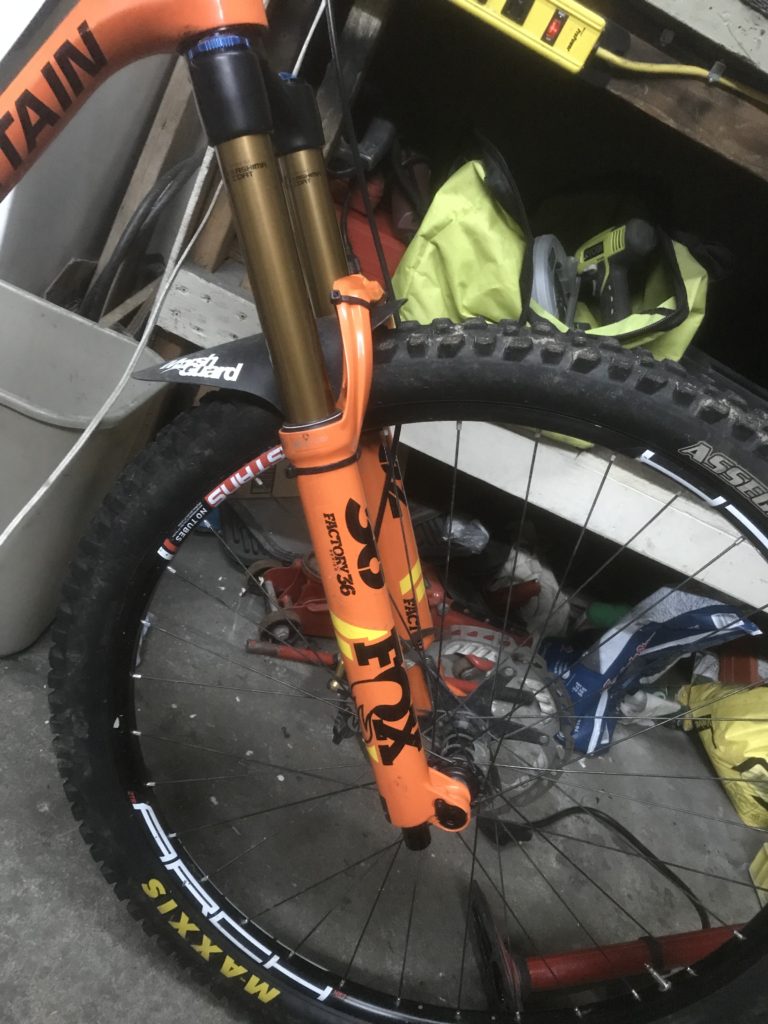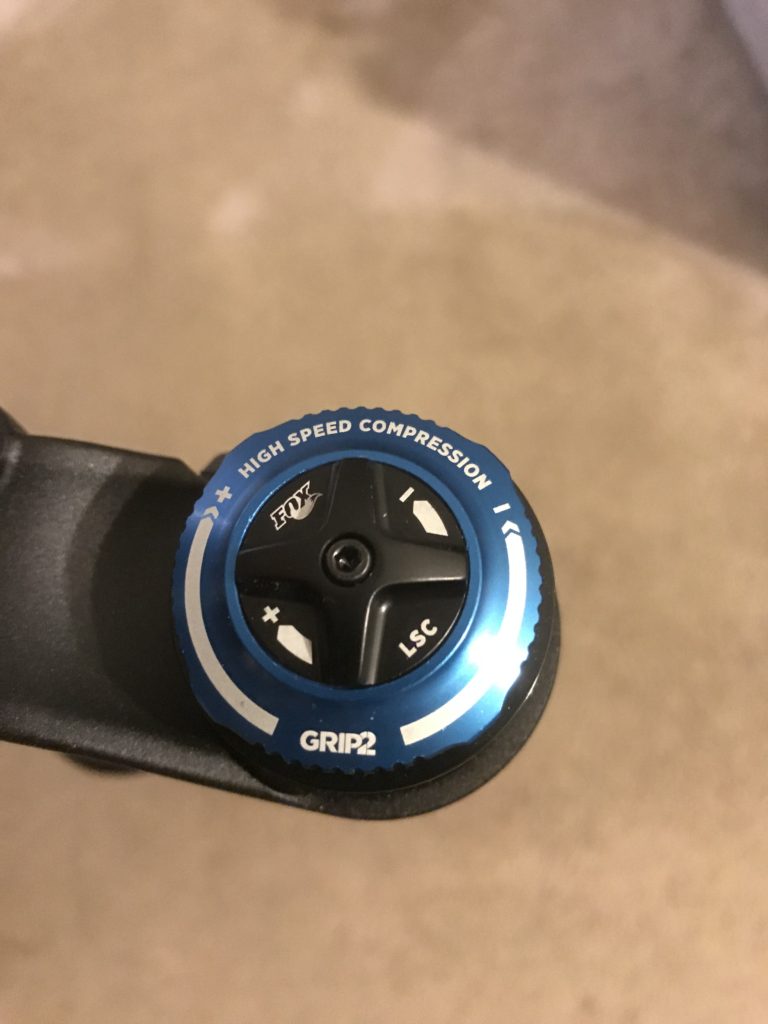Ever since riding a Fox Fork starting in 2013, I was hooked. Back then, I was on a Fox 40 with the RC2 damper. This was before the air spring came out, so it still had a titanium spring keeping me up. I was amazed with the support and how much it was able to keep me up in the travel, yet still being smooth. I had previously been riding a couple different Marzochi 888 forks, which were really good and ahead of their time when they were new, but I could definitely tell a huge difference in weight of the two forks, even though they were both coil. In 2014, the air version came out and things kept on improving, getting lighter and smoother. Fast forward to mid 2018, the new Grip 2 Damper became available to me, and I was so excited to see what it was all about.

Visually, the forks aren’t that much different, until you start to look a bit closer. The high and low speed compression dials at the top of the fork have been visually updated, but still provide the same function. Some might notice the rebound cap is a bit longer than usual. This is to make room for a high speed rebound adjustment, in addition to the low speed adjuster, which we are all used to.

My experience with the Grip 2 damper were limited to a Fox 36 at first, but now I have it on both my DH and Enduro bike and I couldn’t be more impressed with the swap from my 2016 40 with that year of RC2 damper to the Grip2.
There are a lot of other reviews and videos about the actual technology change and the build of the Grip2 Damper, so I won’t focus on that. I’ll focus on my riding/racing impressions, how I set it up, and what settings I’ve found to work well for the different types of riding I do.
Here is Fox Explaining the technology behind the new damper.
First Impressions:
After installing the fork on my Rocky Mountain Instinct BC, I started riding up to Mt. Fromme from home. On the flat road right outside the house, I noticed that the fork would bob through its travel just my pedal stroke. I have never never experienced that from any fork, even some Rockshox forks, which are known for being super smooth. Even at the (much) higher air pressures than recommended for my weight that I like to run, the fork is so sensitive through the beginning of the travel that it cycles even while pedaling casually along a flat road. I was amazed and slightly nervous that it may not have had the support that Fox is so well known for. Boy was I ever wrong.
After a few rides of dialling it in and playing around with air pressure and compression settings, I settled on 8PSI higher than on my fork with the RCT damper and 5-8 more clicks of high speed compression to get the right balance of support and suppleness. The high speed rebound adjustment took a little longer to figure out what was best for me.
I’ve seen/heard a few riders say that they don’t find much difference in the feeling of the fork when they adjust the high speed rebound. There are 8 clicks of adjustment for the HSR, less than LSR, but I found that it was all I needed. It did take longer for me to figure out what exactly I was adjusting and how it changed how the fork behaved on the trail. Simply cycling the fork through it’s travel at stand still will not help you figure out how you should set the HSR. I actually spent a full day in the bike park just dialling in both high and low speed rebound to where I liked it.
The fact that I thought maybe fork wouldn’t be as supportive as the previous damper was foolish, and I was instantly relieved and a little bit surprised that a fork could have such good small bump sensitivity and be able to hold me up nice and high through brake bumps and under braking.
Longer Term:
I’ve had the fork for around 9 months now and I haven’t had any reliability issues. A lot more other people now have the fork and I haven’t heard of anybody having issues out of the box so far. I’ve been continually adjusting my pressure and compression settings to adapt to different terrain and riding styles throughout the 9 months, and I couldn’t be happier with how the fork has been performing. Lower oil services are just as easy before, the only difference being it uses a 5wt oil that’s teflon infused for the new damper on the damper side fork leg. The air side still uses 20wt Gold oil.

